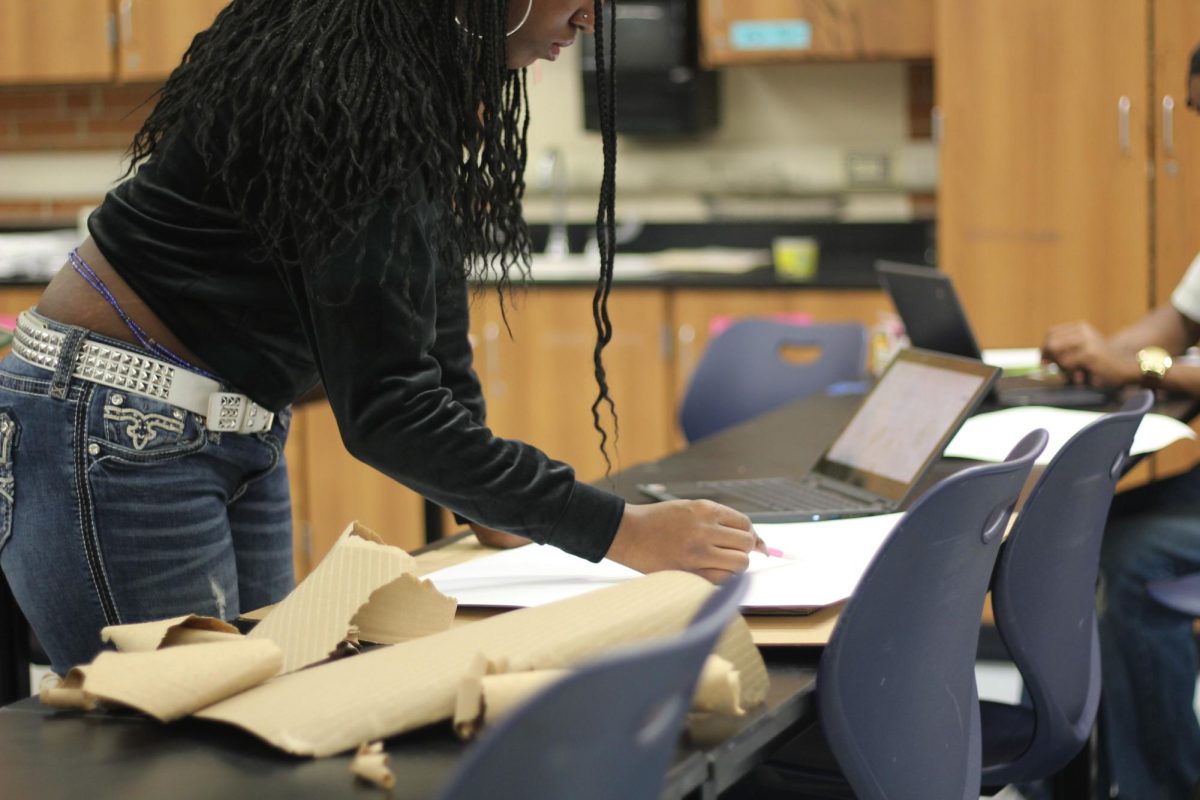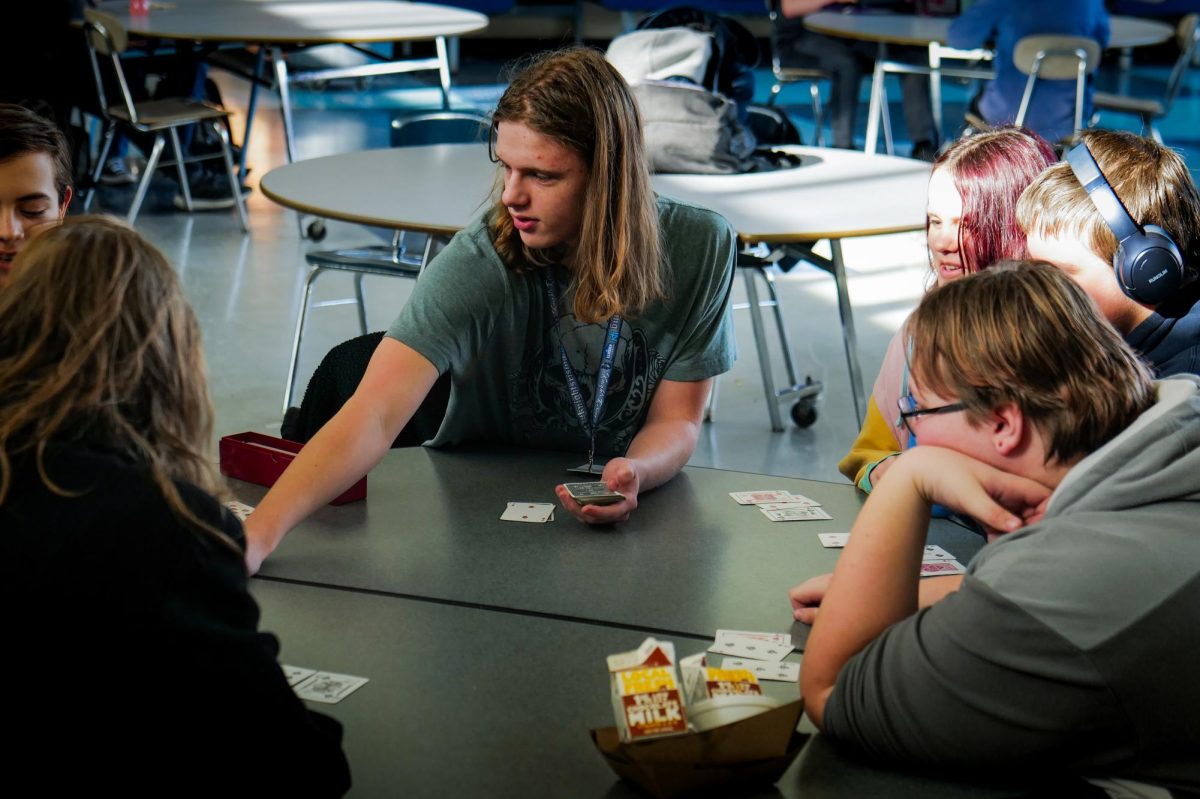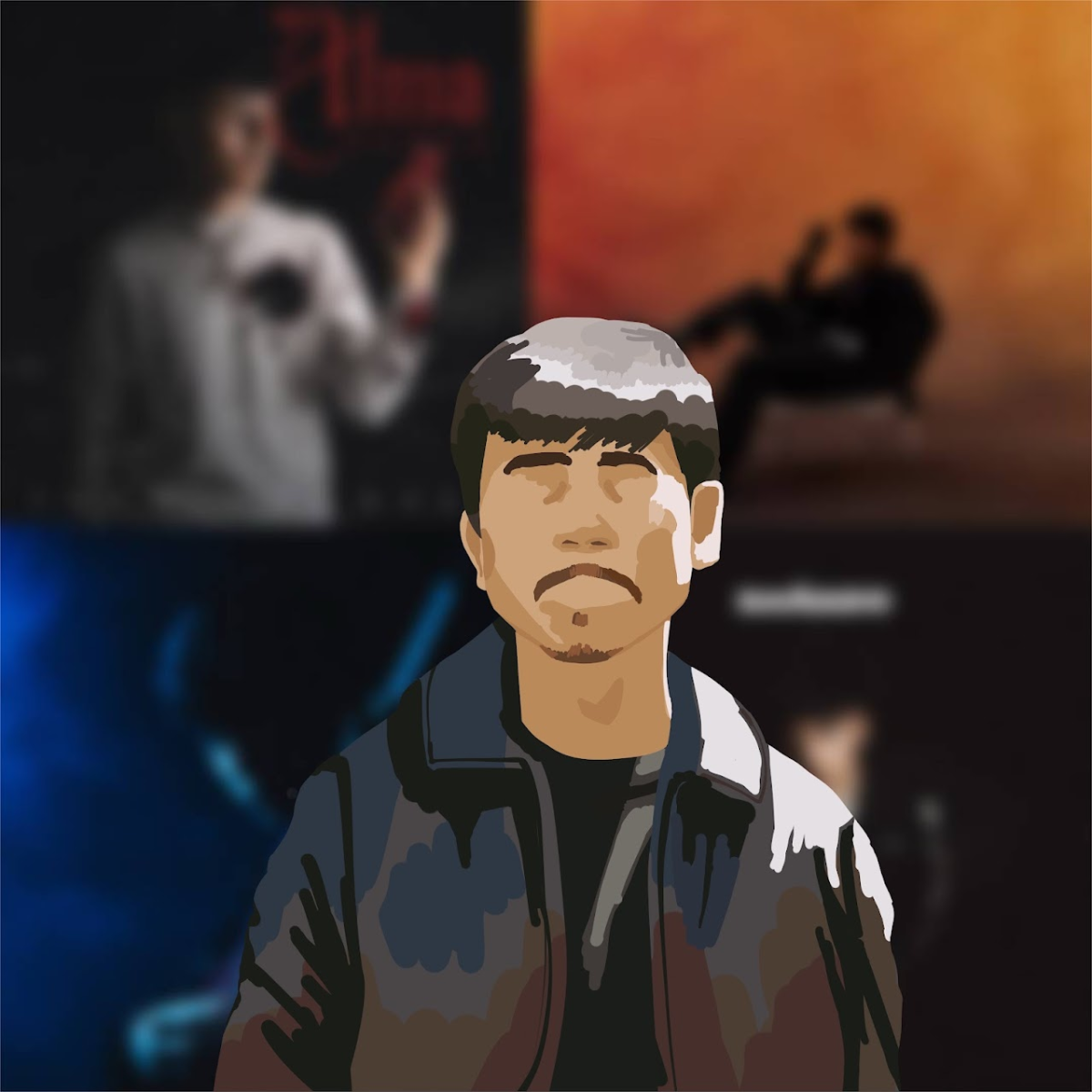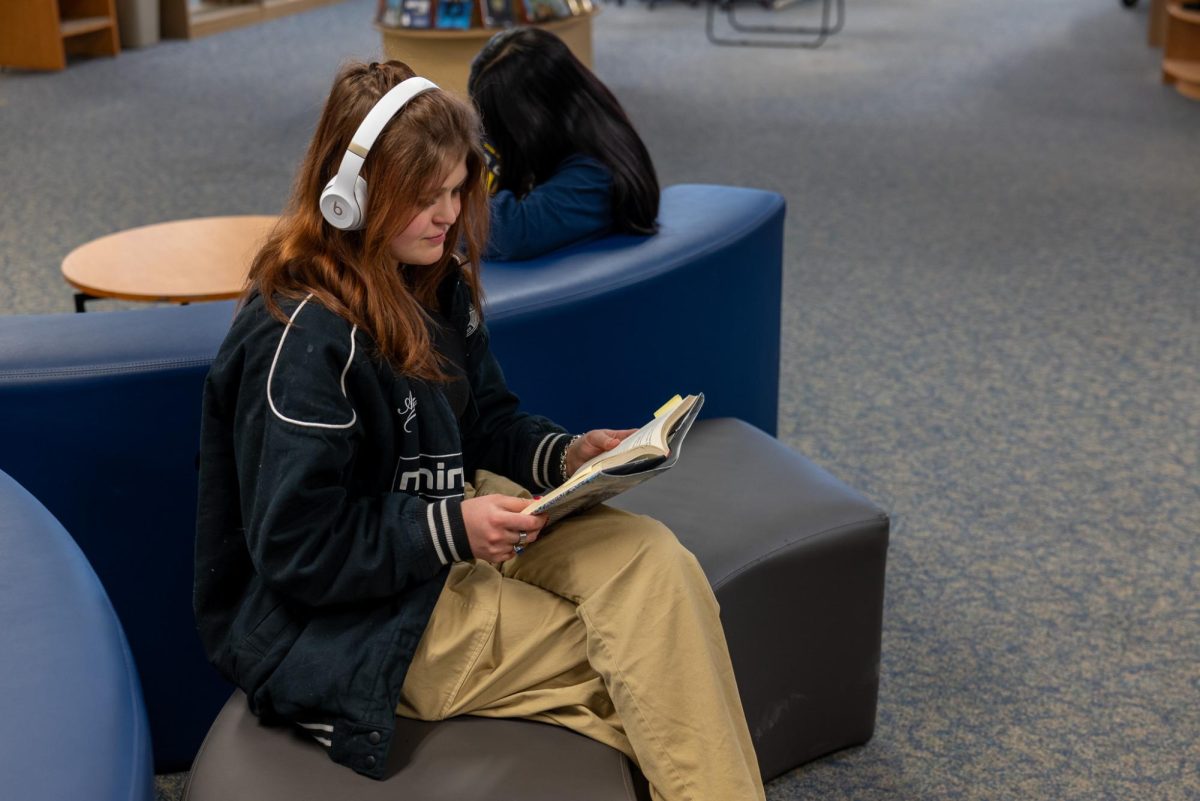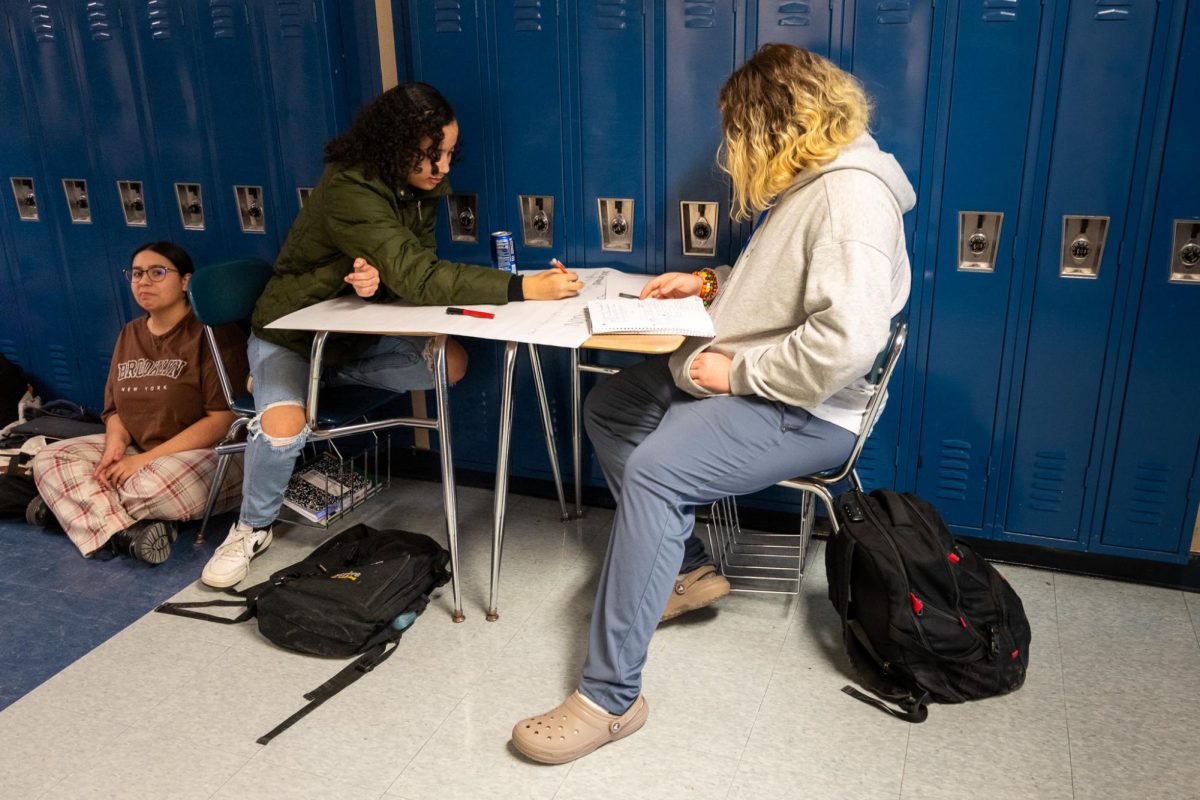Two year-old Kamryn Caldwell wanders around her parents’ home looking for something to do. Still getting used to walking, she trips and catches herself on the wall. Dazed by the stumble, she slowly follows her hand to look up at the sprawling white drywall. What she really sees is a canvas.
“When I was a baby, my parents would give me sketchbooks and stuff to draw on. They knew I was going to like art,” said senior Caldwell.
Caldwell’s passion for making art started young. Many other artists at Loy Norrix have the same experience. A majority of artists said they started making art around two to five years old. They were able to experiment with a variety of art methods like drawing, painting, sculpture and paper mache in their elementary school art classes.
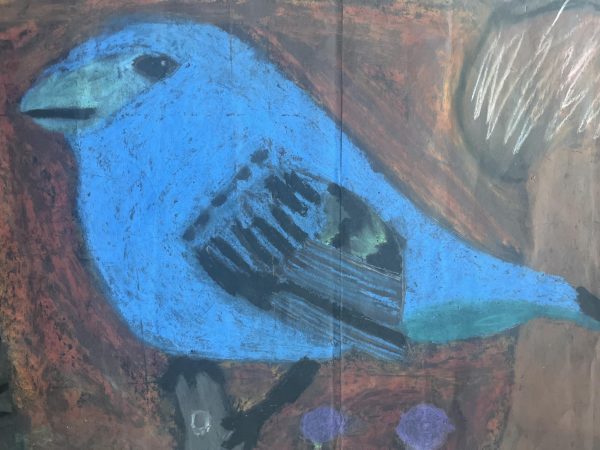
Freshman Alex Ludwa was fond of their art teacher at Winchell Elementary School, Mandy Clearwaters. Students who had a supportive elementary art teacher like Clearwaters found it was beneficial to their development as an artist.
“I think her enthusiasm about art brought out a lot of creativity in myself that would not have happened had she not been a part of my education,” said Ludwa.
Unless they take an art class in school, it can be difficult for artists to find time outside of school to make art. Core classes such as English, math, science and social studies require the most credits, which leaves less room for art classes.
“I know a lot of artists that aren’t good with schedules, aren’t good with deadlines, that aren’t good with being told what to do,” said senior Tye Schultheiss. “If they could just do whatever they wanted they would blossom, but they have it in their head that they’re a failure because they’re bad at math or science.”
Although core classes are necessary for a proper education, some artists found the lack of a creative outlet damaging to their creativity as they got older.
“I find it a lot harder to imagine ideas that I want to do. I used to feel more confident with drawing things from my head,” said junior Ian Shanahan.
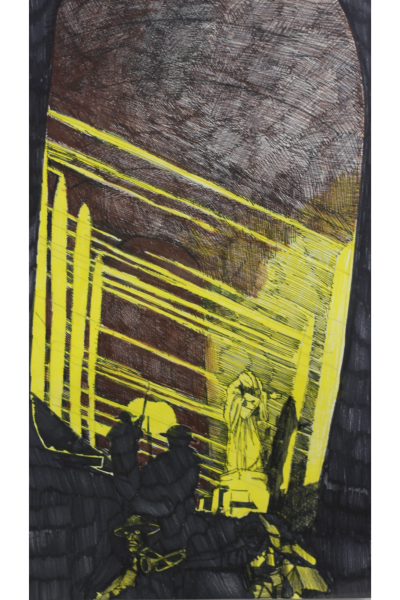
Advanced art classes that function on strict deadlines can also take away the enjoyment of art. However, some artists find rigorous art classes to be a healthy challenge for them. As these students advance into high school art classes, there are more opportunities for art teachers and students to critique their work. Critiques give art students feedback on their work so they can constantly improve in class.
“Criticism, to be honest, is always helpful,” said junior Efrem Masterson.
Masterson is completing his first year in Advanced Placement (AP) Art. It was completely new to him compared to his past art classes and especially stressful. AP Art students are required to make pieces every week, accompanied by extensive research, that build up to a 15-piece portfolio by the end of the year.
“It can definitely be a struggle to get used to things, but I definitely got used to it after the first trimester final,” said Masterson.
A committed fast-paced art class isn’t for everyone, but the school provides many baseline classes if students want to learn watercolor, ceramics, cartoon/comics, graphic design and more.
Functional Ceramics is a single-trimester class where students use their hands and a pottery wheel to create dinnerware and decorative pieces. Wind chimes have been senior A’tianna Bankhead’s favorite project in the class so far.
“It’s fun because you’re not limited to what you can make,” said Bankhead. “Ceramics teaches me patience because it’s so hard but it’s so fun.”
These classes are just the beginning of their lifelong relationship with art. Students may develop their skills by studying art in college. Others choose to use art as a relaxing hobby. For all of them, their relationship with art as adults will change significantly.
“I’ll have more and less time if that makes sense. I’m a teenager, I have my own stuff to do and I don’t have a job, so that means I can do as I wish. But when I’m an adult, it could be my job but also it couldn’t,” said sophomore Alice Wadsworth-Curcuru.
Art provides something special to anyone who makes it. Art has no limitations, it is a vast and freeing study. There’s an endless amount of creations to be made. Students have many reasons why they choose to study art over anything else.



